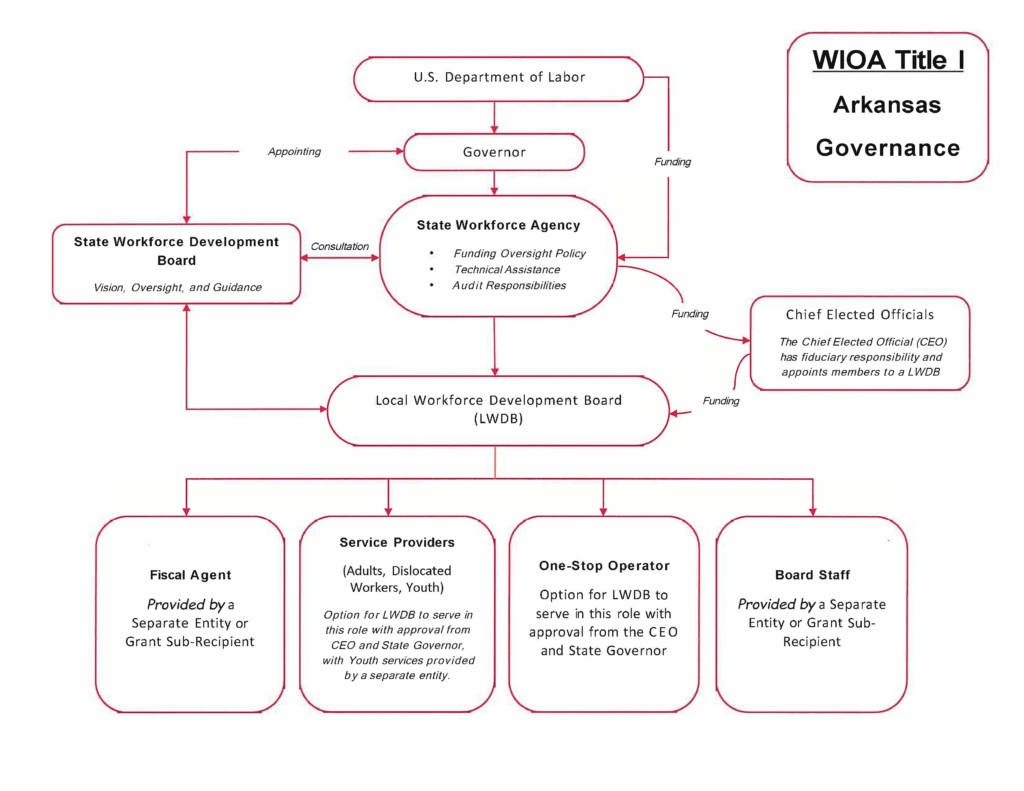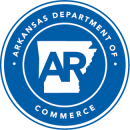Arkansas Workforce Development Board

Message from Chairman Thomas Anderson
As Chairman of the Board, I welcome you to the Arkansas Workforce Development Board page.
Our board members and staff work together to assess and align services and programs under the Workforce Innovation and Opportunity Act (WIOA). We strive to identify how best we can serve those seeking education, training, and employment. We are responsible for overseeing the management and performance of the workforce system under WIOA and for conducting strategic planning to ensure the workforce system meets the needs of employers and job seekers. To accomplish this, we collaborate with community organizations, education partners, private industry leaders, and other stakeholders to identify trends and opportunities in the labor market. Our collaborative efforts enable us to coordinate workforce development activities accordingly to create a well-trained and sustainable workforce for existing and future industries in our region.
We appreciate your interest in the Arkansas Workforce Development Board and encourage you to explore this page, where you will find more information about who we are and what we do.
About the Board
The Arkansas Workforce Development Board is appointed by the governor and serves as a convener of state, regional, and local workforce system partners to enhance the capacity and performance of the workforce development system; align and improve employment, training, and education programs; and, through these efforts promote economic growth.
As a strategic convener, the Arkansas Workforce Development Board promotes partnerships and engages key stakeholders. Through the leadership of the Arkansas Workforce Development Board, the state can ensure that the workforce development system in Arkansas is customer-driven for both job seekers and employers. This effort includes aligning federal investments in job training, integrating service delivery across programs, and ensuring that the workforce system is job-driven and matches employers with skilled individuals.
The management of the Arkansas delivery system is a shared responsibility of the State, Local Workforce Development Boards, Chief-Elected Officials, core WIOA partners, other required partners, and Workforce Center operators.
History, Mission, & Vision
History
Manpower Development and Training Act (1962-1973)
In 1962, President John F. Kennedy recognized that unemployment was again on the rise, and the worker skills gap was increasing rapidly with a changing economy. The Manpower Development and Training Act was designed to provide training to unemployed adults and a small percentage of youth workers whose skills needed to be upgraded to enter or re-enter the workforce.
Comprehensive Employment and Training Act (1973-1982)
The Comprehensive Employment and Training Act (CETA), implemented in 1973, resulted from many revisions to the Manpower Development and Training Act. CETA was designed to create jobs for unemployed adults and provide summer job opportunities for high school students. A primary focus of CETA was apprenticeships for unemployed or underemployed individuals to help them gain experience and on-the-job training. CETA consolidated federal training programs and services and placed greater responsibility on states as “Prime Sponsors.” Under CETA, many new programs were created and implemented.
Job Training Partnership Act (1982-1998)
The Job Training and Partnership Act (JTPA) further consolidated education and job training programs by setting up regional Service Delivery Areas (SDAs) in each state, but still placed a heavy responsibility on the federal government. These SDAs evolved into today’s Workforce Investment Areas. More emphasis was placed on the analysis of the programs initiated through JTPA to show that they were having a positive impact on society. JTPA focused on training unemployed adults and youth through various programs and created private industry councils to provide input into workforce development programs.
Workforce Investment Act (1998-2014)
Fourteen years after the Job Training Partnership Act, President William J. Clinton spearheaded the passage of the Workforce Investment Act (WIA). Enacted during a period of full employment, WIA focused on delivering workforce development programs and related services through a nationwide network of community-based, one-stop career centers. These centers were set up to assist all individuals and established mandatory partners to participate in these centers, so individuals could access a variety of related workforce programs and services from a single location. WIA created business-led Workforce Investment Boards to develop local strategies based on labor market data and to oversee programs in their communities.
Workforce Innovation and Opportunity Act (2014-present)
On July 22, 2014, President Obama signed the Workforce Innovation and Opportunity Act of 2014 (WIOA), which reauthorizes the workforce investment system and replaces the Workforce Investment Act of 1998. WIOA took effect on July 1, 2015, when the state and local workforce development boards began implementing the act.
Mission
To promote and support a talent development system in Arkansas that offers employers, individuals, and communities the opportunity to achieve and sustain economic prosperity.
(For full description, see State plan pages 34-36.)
Vision
Arkansas will have a world-class workforce that is well-educated, skilled, and working in order to keep Arkansas’ economy competitive in the global marketplace.
(For full description, see State Plan pages 34-36.)

General Information
Member Orientation & Training
Forms
*Note: When you click to open the forms below, you might get a “Please wait” message suggesting you upgrade Adobe Reader. If this happens, try downloading the form to your computer (by clicking the down arrow icon in the top right corner). Then, open the form from where you saved it, and it should load without the Adobe Reader message. If you continue to have trouble, please contact [email protected].
- Board Member Orientation and Training Form
- Board Member Declination of Stipend
- Board Member Data Collection Sheet
- By-Laws Acknowledgement Form
- Direct Deposit Notification
- Direct Deposit Enrollment Form
- W-4 Form
- W-9 Form
- Withholding Exemption Certificate
- Instructions Form for Eligibility Verification
- Eligibility Verification Form
- AWDB Proxy Representation Form
- Secretary of State – Financial Disclosure
Policies
AWDB Newsletters
Apply for Appointment
Are you interested in becoming a member of the Arkansas Workforce Development Board? To be considered for appointment to the AWDB or other boards and commissions in Arkansas, apply online at the link below!



